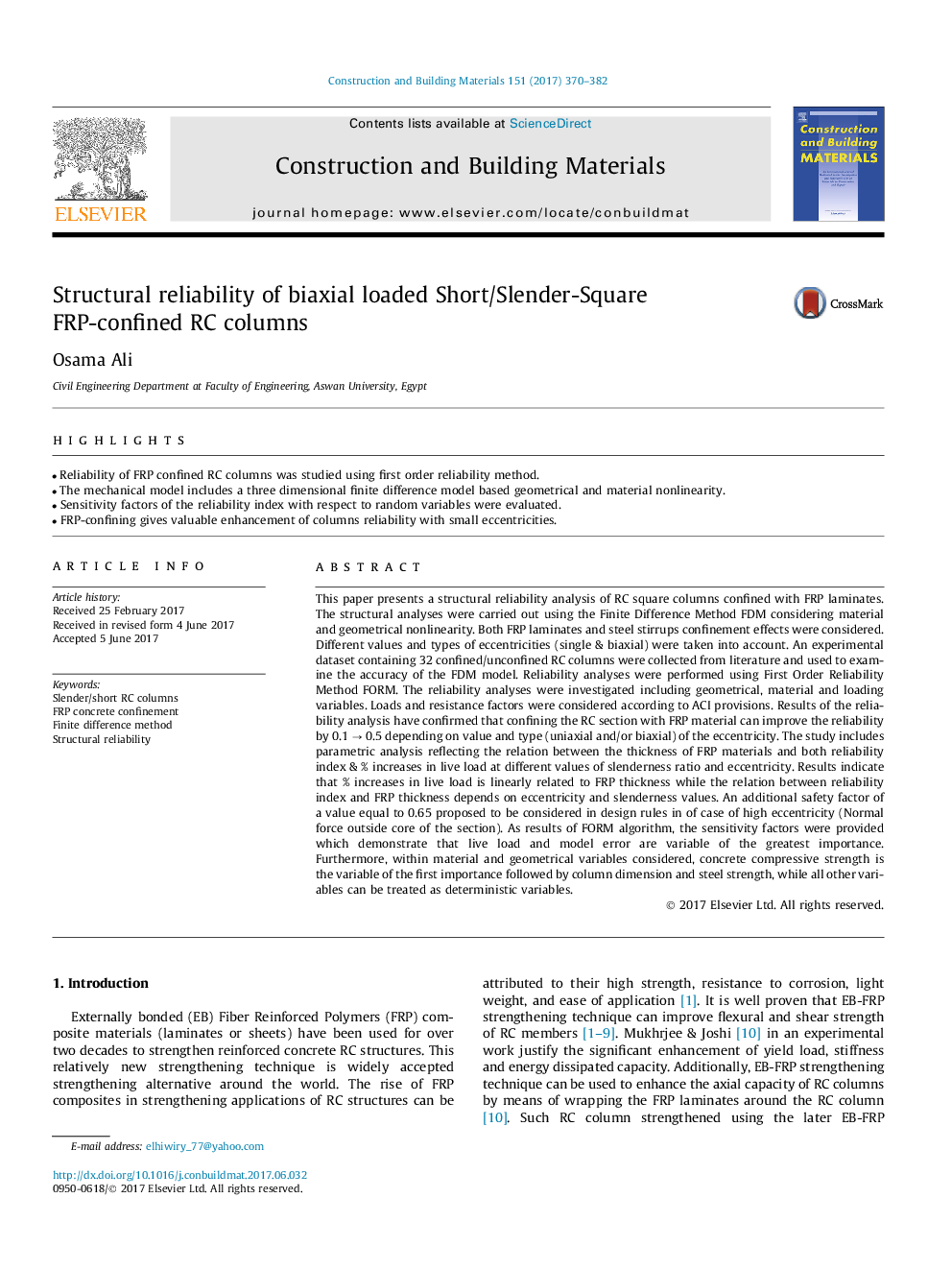| Article ID | Journal | Published Year | Pages | File Type |
|---|---|---|---|---|
| 4918192 | Construction and Building Materials | 2017 | 13 Pages |
Abstract
This paper presents a structural reliability analysis of RC square columns confined with FRP laminates. The structural analyses were carried out using the Finite Difference Method FDM considering material and geometrical nonlinearity. Both FRP laminates and steel stirrups confinement effects were considered. Different values and types of eccentricities (single & biaxial) were taken into account. An experimental dataset containing 32 confined/unconfined RC columns were collected from literature and used to examine the accuracy of the FDM model. Reliability analyses were performed using First Order Reliability Method FORM. The reliability analyses were investigated including geometrical, material and loading variables. Loads and resistance factors were considered according to ACI provisions. Results of the reliability analysis have confirmed that confining the RC section with FRP material can improve the reliability by 0.1 â 0.5 depending on value and type (uniaxial and/or biaxial) of the eccentricity. The study includes parametric analysis reflecting the relation between the thickness of FRP materials and both reliability index & % increases in live load at different values of slenderness ratio and eccentricity. Results indicate that % increases in live load is linearly related to FRP thickness while the relation between reliability index and FRP thickness depends on eccentricity and slenderness values. An additional safety factor of a value equal to 0.65 proposed to be considered in design rules in of case of high eccentricity (Normal force outside core of the section). As results of FORM algorithm, the sensitivity factors were provided which demonstrate that live load and model error are variable of the greatest importance. Furthermore, within material and geometrical variables considered, concrete compressive strength is the variable of the first importance followed by column dimension and steel strength, while all other variables can be treated as deterministic variables.
Related Topics
Physical Sciences and Engineering
Engineering
Civil and Structural Engineering
Authors
Osama Ali,
